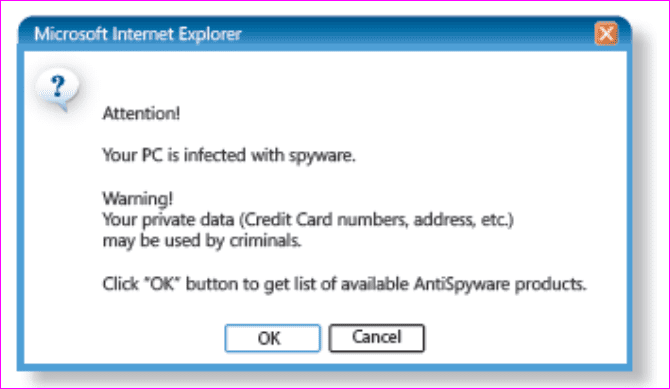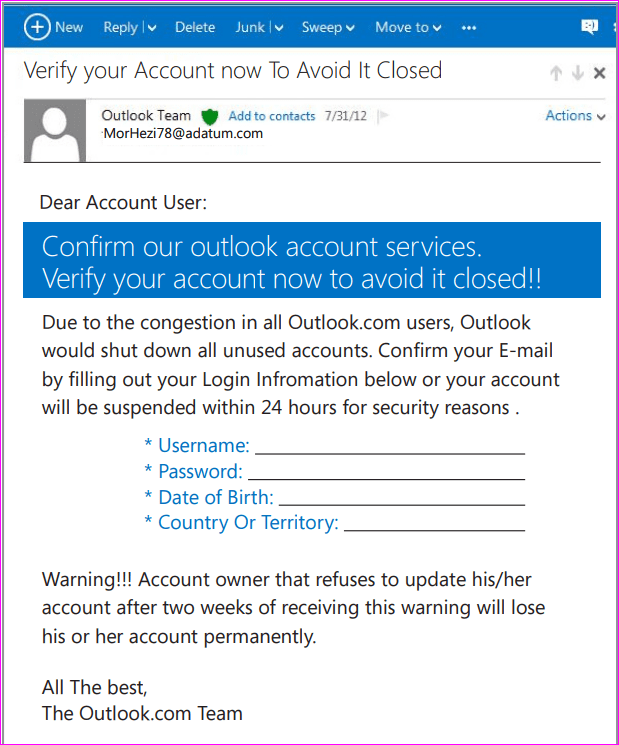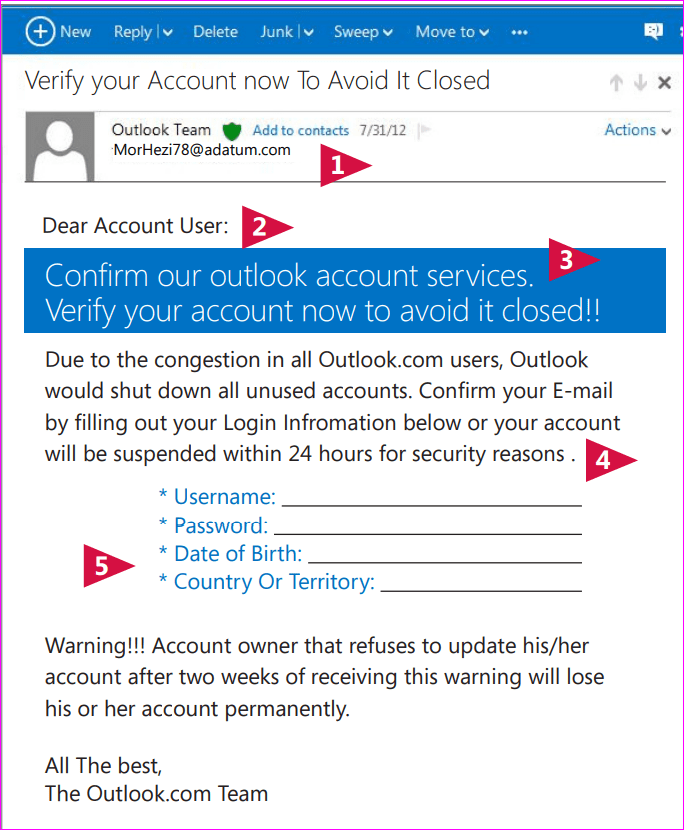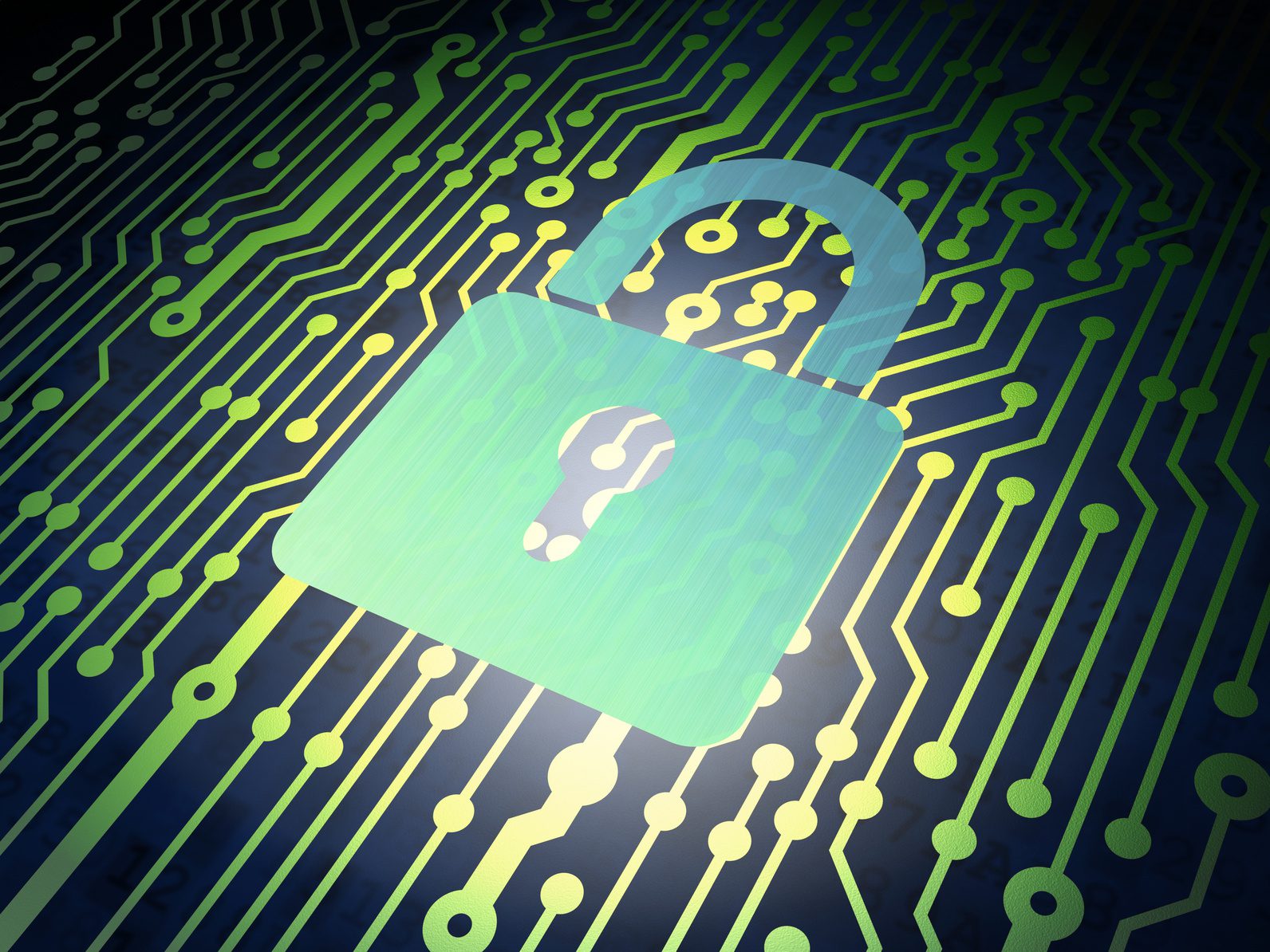With October being National Cyber Security Awareness Month, we thought it was the perfect time to test our Internet Security IQ with these 5 questions. Test your online safety below!
Test Your Internet Security IQ
1. Which of the following is a strong password? (Check all that apply)
a)__ Password1
b)__Your pet’s name
c)__R3dHairH@rse$ky
d)__135689425123
e)__The first letters of each word in a saying, phrase, or sentence that’s easy for you to remember.
2. If you see a pop-up message like this when you’re on the web, you should:

a)__ Click OK
b)__ Click Cancel
c)__ Click the X button
d)__Press Ctrl +F4 on your keyboard to close it.
3. If you receive an email or an IM from a manager within your organization asking for sensitive personal information (like a password or SSN), it’s okay to provide it.
a)__True
b)__False
4. You don’t have to worry about viruses in links or attachments as long as your security software is updated.
a)__True
b)__False
5. This was a fraudulent phishing message from “Microsoft” to an Outlook user. Can you spot five warning signs that it’s a hoax?

ANSWERS
- CORRECT:
- c)~R3dHairH@rse$ky. Use words (RedHairHorseSky) that do not make sense grammatically, but mean something to you.
- e)~The first letters of each word in a sentence that’s memorable to you (we suggest also adding numbers and symbols)
- CORRECT:
- d) Press CTRL + F4 to close the message. Anything you can click in a pop-up message–including the X (close) button– can be reprogrammed to download malicious software.
- FALSE. Someone could have broken into the company network and sent an email from the manager’s account. Use your company contact list to contact the manager directly. Don’t call the number in the email.
- FALSE. Even the most effective antivirus software cannot be 100% effective against viruses which are always evolving.

1) Email Address- email address is not from @outlook.com
2) Generic salutations- not using your name
3) Time-sensitive, Alarmist Message- criminals create a sense of urgency so you’ll act fast without thinking.
4) Misspellings and grammatical errors
5) Sensitive Account Information-requests to verify or update your account, asking for passwords, usernames, account information, etc.
Thank you, Microsoft and Homeland Security for providing these online safety tips!

